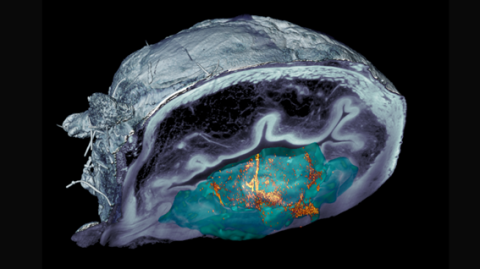Bladder cancer treatment via intravesical drug administration achieves reasonable survival rates but suffers from low therapeutic efficacy. To address the latter, self-propelled nanoparticles or nanobots have been proposed, taking advantage of their enhanced diffusion and mixing capabilities in urine when compared with conventional drugs or passive nanoparticles. However, the translational capabilities of nanobots in treating bladder cancer are underexplored. Here, we tested radiolabelled mesoporous silica-based urease-powered nanobots in an orthotopic mouse model of bladder cancer. In vivo and ex vivo results demonstrated enhanced nanobot accumulation at the tumour site, with an eightfold increase revealed by positron emission tomography in vivo. Label-free optical contrast based on polarization-dependent scattered light-sheet microscopy of cleared bladders confirmed tumour penetration by nanobots ex vivo. Treating tumour-bearing mice with intravesically administered radio-iodinated nanobots for radionuclide therapy resulted in a tumour size reduction of about 90%, positioning nanobots as efficient delivery nanosystems for bladder cancer therapy.

